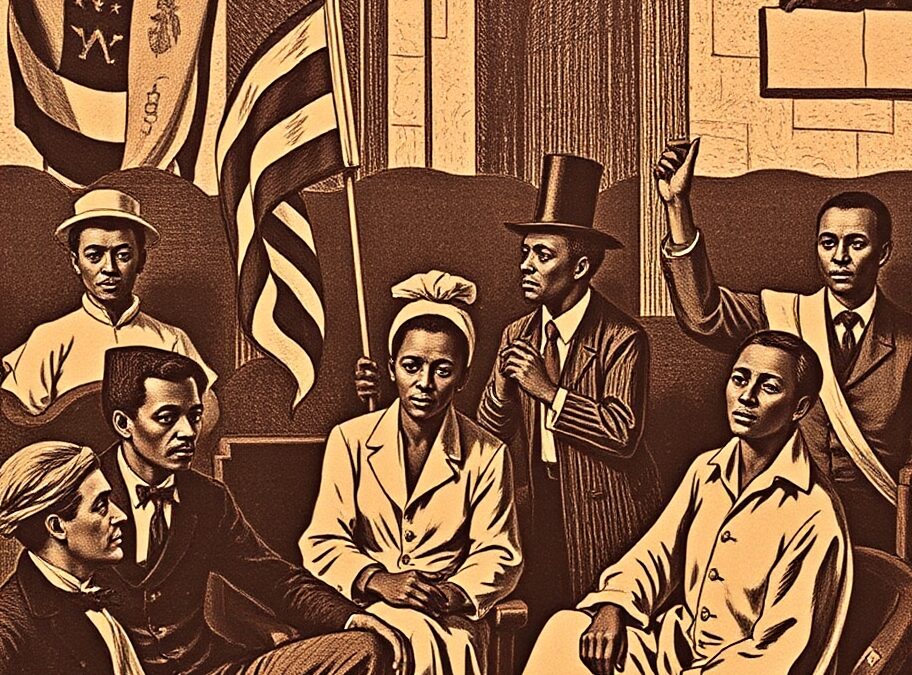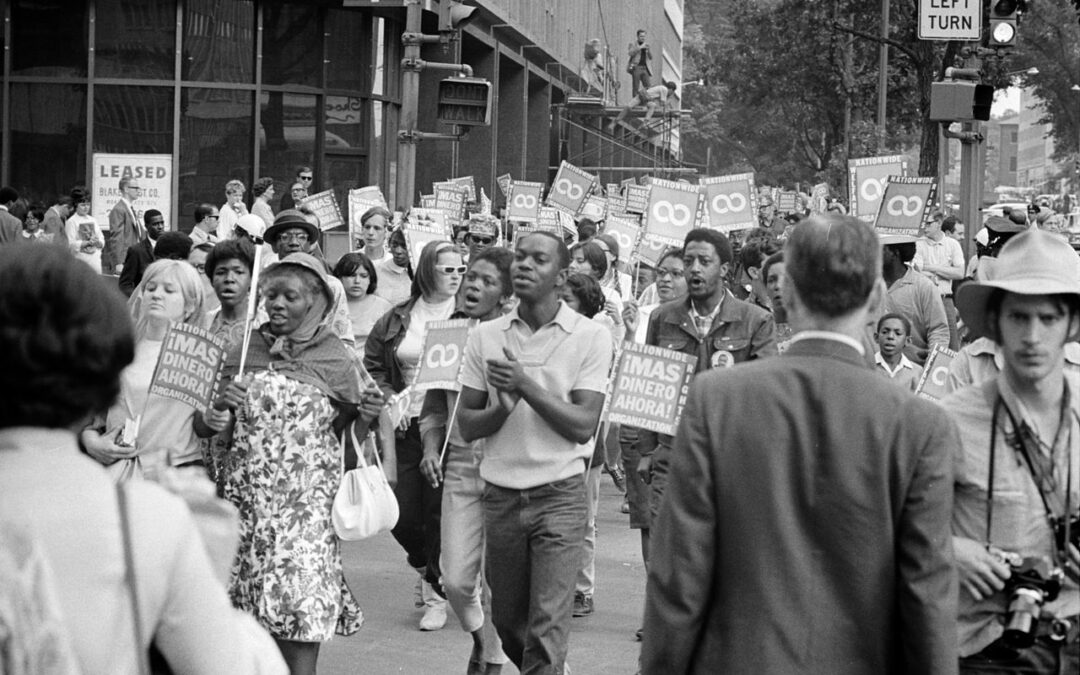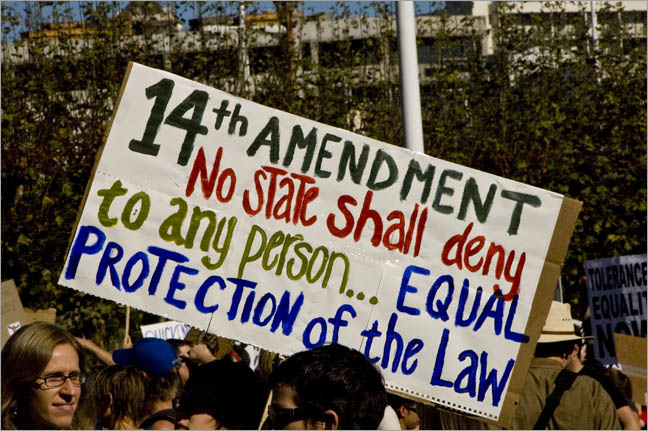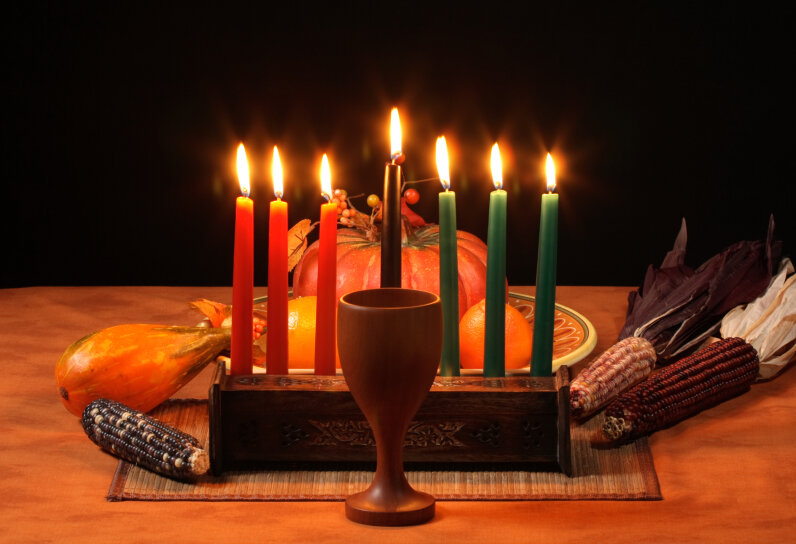Grice wrote to a number of Black American leaders asking if freedmen should emigrate to Canada and, if a convention could be held to discuss the issue.
By September 15, 1830 the first National Negro Convention was held in Philadelphia.


The Rainbow PUSH Coalition is the result of a merger between Operation PUSH and the Rainbow Coalition. Established in 1971 by Rev. Jackson, People United to Save Humanity (later changed from “Save” to “Serve”)–PUSH, was an organization dedicated to improving the economic conditions of black communities across the United States. In the 1970’s, PUSH expanded into areas of social and political development using direct action campaigns, a weekly radio broadcast, and awards that honored prominent blacks in the U.S. and abroad. Through Operation PUSH, Rev. Jackson established a platform from which to protect black homeowners, workers and businesses. (more…)

The first National Negro Convention began in Philadelphia, 1830, where they agreed to boycott slave-produced goods.
Grice wrote to a number of Black American leaders asking if freedmen should emigrate to Canada and, if a convention could be held to discuss the issue.
By September 15, 1830 the first National Negro Convention was held in Philadelphia.

The Poor People’s Campaign, or Poor People’s March on Washington, was a 1968 effort to gain economic justice for poor people in the United States. It was organized by Martin Luther King Jr. and the Southern Christian Leadership Conference (SCLC), and carried out under the leadership of Ralph Abernathy in the wake of King’s assassination in April 1968.
The campaign demanded economic and human rights for poor Americans of diverse backgrounds. After presenting an organized set of demands to Congress and executive agencies, participants set up a 3,000-person protest camp on the Washington Mall, where they stayed for six weeks in the spring of 1968.

Section. 1. All persons born or naturalized in the United States and subject to the jurisdiction thereof, are citizens of the United States and of the State wherein they reside. No State shall make or enforce any law which shall abridge the privileges or immunities of citizens of the United States; nor shall any State deprive any person of life, liberty, or property, without due process of law; nor deny to any person within its jurisdiction the equal protection of the laws.
Section. 2. Representatives shall be apportioned among the several States according to their respective numbers, counting the whole number of persons in each State, excluding Indians not taxed. But when the right to vote at any election for the choice of electors for President and Vice President of the United States, Representatives in Congress, the Executive and Judicial officers of a State, or the members of the Legislature thereof, is denied to any of the male inhabitants of such State, being twenty-one years of age, and citizens of the United States, or in any way abridged, except for participation in rebellion, or other crime, the basis of representation therein shall be reduced in the proportion which the number of such male citizens shall bear to the whole number of male citizens twenty-one years of age in such State.
Section. 3. No person shall be a Senator or Representative in Congress, or elector of President and Vice President, or hold any office, civil or military, under the United States, or under any State, who, having previously taken an oath, as a member of Congress, or as an officer of the United States, or as a member of any State legislature, or as an executive or judicial officer of any State, to support the Constitution of the United States, shall have engaged in insurrection or rebellion against the same, or given aid or comfort to the enemies thereof. But Congress may by a vote of two-thirds of each House, remove such disability.
Section. 4. The validity of the public debt of the United States, authorized by law, including debts incurred for payment of pensions and bounties for services in suppressing insurrection or rebellion, shall not be questioned. But neither the United States nor any State shall assume or pay any debt or obligation incurred in aid of insurrection or rebellion against the United States, or any claim for the loss or emancipation of any slave; but all such debts, obligations and claims shall be held illegal and void.
Section. 5. The Congress shall have power to enforce, by appropriate legislation, the provisions of this article.

(1861-64), in U.S. history, series of laws passed by the federal government during the American Civil War that were designed to liberate slaves in the seceded states. The first Confiscation Act, passed on Aug. 6, 1861, authorized Union seizure of rebel property, and it stated that all slaves who fought with or worked for the Confederate military services were freed of further obligations to their masters.
President Abraham Lincoln objected to the act on the basis that it might push border states, especially Kentucky and Missouri, into secession in order to protect slavery within their boundaries. He later convinced Congress to pass a resolution providing compensation to states that initiated a system of gradual emancipation, but the border states failed to support this plan. And Lincoln repudiated the position of Generals John C. Fr

Also spelled KWANZA (Swahili: “First Fruits”), African-American holiday, celebrated each year from December 26 to January 1; it is patterned after various African harvest festivals.
Kwanzaa was created in 1966 by Maulana Karenga, a black-studies professor at California State University at Long Beach, as a nonreligious celebration of family and social values. By the early 1990s it was estimated to have more than 5 million celebrants. Each day of Kwanzaa is dedicated to one of seven principles: unity (umoja), self-determination (kujichagulia), collective responsibility (ujima), cooperative economics (ujamaa), purpose (nia), creativity (kuumba), and faith (imani).
Each evening family members gather to light one of the candles in the kinara, a seven-branched candelabra, and discuss the principle for that day; often gifts are exchanged. On December 31 the family joins other members of the community for a feast, called the karamu.